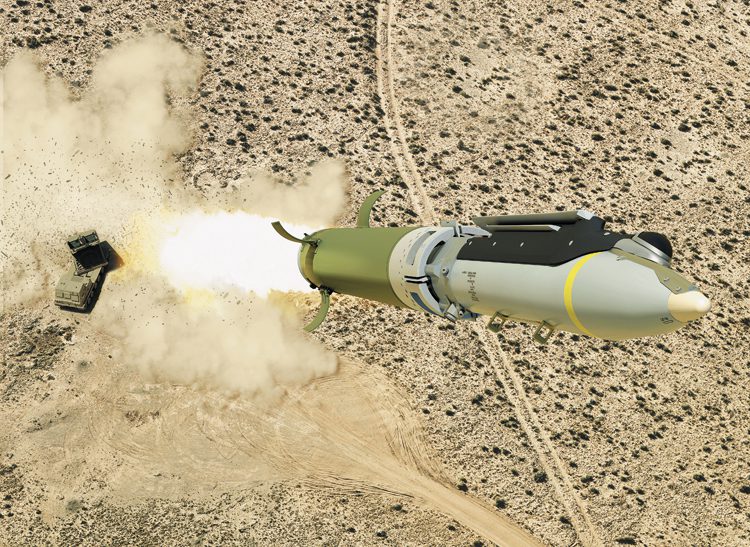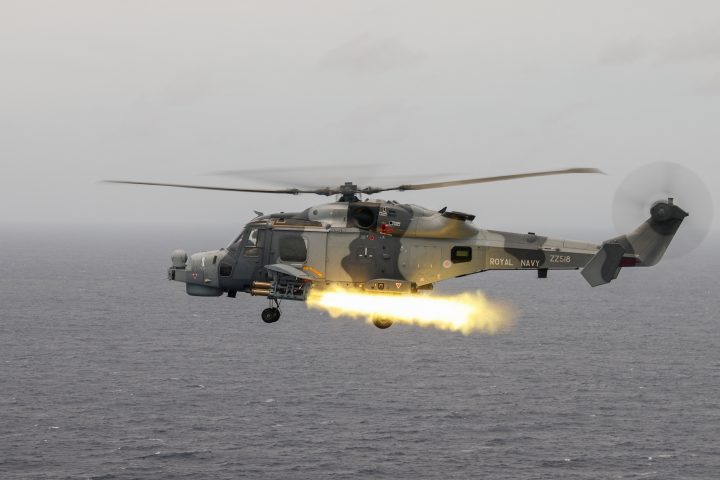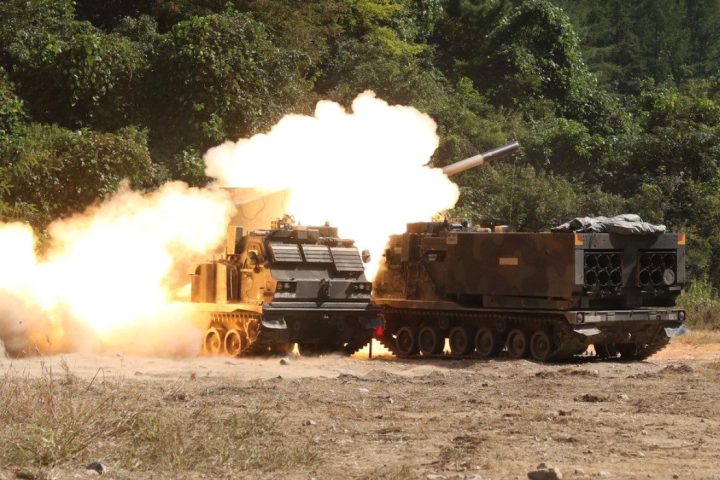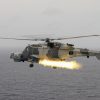When Boeing and Saab announced on October 13, 2019, that they had completed all testing of the Ground-Launched Small Diameter Bomb (GLSDB) and that it was ready for serial production, the news barely made a ripple. Overshadowed by a flood of headlines about emerging combat systems, it passed unnoticed by many. Yet behind the scenes, a quiet revolution in precision-guided munitions was underway.
Although defense manufacturers often use the term “revolutionary” to generate buzz around new products, history does remember truly transformative weapons: the Roman pilum, the English longbow, the crossbow, gunpowder, dynamite, Colt’s revolver, Gatling’s rotary cannon, the breech-loading Armstrong gun, Maxim’s machine gun, the Whitehead torpedo, radar, and, of course, the nuclear bomb.
So, when Boeing and Saab claimed the GLSDB would revolutionize the battlefield, skepticism was understandable. But is it simply marketing hype—or a legitimate evolution in modern warfare?
The Concept Behind GLSDB
At its core, the GLSDB is a hybrid system. It combines Boeing’s proven GBU-39 Small Diameter Bomb (SDB)—an air-launched glide munition—with the M26 rocket motor, originally used in the M270 MLRS (Multiple Launch Rocket System). Since the SDB has no propulsion of its own, the M26 rocket motor provides the necessary thrust, transforming it into a ground-launched cruise missile with a much greater operational range.
The M26 rocket, originally designed to deliver cluster munitions, has become obsolete due to international restrictions. Yet its surplus boosters remain, offering an ideal, cost-effective platform for adaptation. The result is a low-cost, precision-guided munition that can be launched from mobile systems—including modified trucks or small naval vessels.
Boeing and Saab promise that the GLSDB will be both affordable and combat-effective. And they may be right.
Origins in the 1990s: SDB Development
The Small Diameter Bomb traces its roots back to the 1990s, when the U.S. Air Force launched the Miniaturized Munitions Technology Demonstration (MMTD) program. This effort aimed to create low-collateral-damage, high-precision weapons, also referred to as “Weapons of Minimum Destruction” (WMD) or Low-Collateral Damage (LCD) munitions. The goal was to destroy specific targets without inflicting unnecessary damage, especially in urban warfare environments.
By the early 2000s, Boeing had won the contract to develop the GBU-39/B SDB, with component contributions from numerous defense contractors:
- Rockwell Collins: GPS navigation system with Harris’s anti-spoofing module.
- Honeywell: Inertial flight control.
- KDI Precision Products: Programmable electronic fuze.
- HR Textron: Tail control section.
- MBDA: Diamond Back wing assembly.
- TAM Garland: Multi-purpose warheads.
- Sargent Fletcher: Pneumatic ejection system for the BRU-61/A launcher.
Accuracy is reinforced by the Accuracy Support Infrastructure (ASI), which corrects GPS errors mid-flight. This allows the SDB to achieve a Circular Error Probable (CEP) of just 5–8 meters.
Combat-Proven and Widely Deployed
By 2020, more than 25,000 SDBs had been delivered, primarily to the U.S. Air Force, but also to allied nations including Israel, Italy, South Korea, Japan, and Saudi Arabia. Weighing just 129 kg, the SDB can be used by a wide range of aircraft—from fourth and fifth-generation fighters to drones like the MQ-9 Reaper.

Its 93 kg warhead can penetrate up to 91 cm of reinforced concrete, making it ideal for fixed targets such as airbases, command centers, and ammunition depots. However, the lack of a propulsion system limits its effectiveness in close air support scenarios due to long flight times—up to 8 minutes for maximum range strikes.
Enhancements: Block 9, FLM, and LSDB
To address the limitations, Boeing developed several upgrades:
- Block 9: Software update improving guidance and reducing flight time.
- Focused Lethality Munition (FLM): A DIME warhead designed for urban warfare, minimizing unintended damage.
- Laser SDB (GBU-39B/B LSDB): A laser-guided version capable of engaging moving targets, adopted by U.S. Special Operations Command (USSOCOM) in 2014.
Beyond SDB I: The StormBreaker
Although the LSDB offered significant improvements, the USAF ultimately selected Raytheon’s GBU-53/B StormBreaker (SDB II) for broader deployment. This advanced munition features tri-mode guidance—semi-active laser, millimeter-wave radar, and imaging infrared—and can strike both stationary and moving targets in all weather conditions.
The GLSDB Takes Shape
Recognizing the value of combining long-range precision with ground-launch flexibility, Boeing and Saab initiated the GLSDB program in 2013. A formal joint agreement followed in 2014.
Key engineering modifications were needed to adapt the air-launched GBU-39 into a ground-launched weapon:
- Guidance system reconfiguration to handle high-acceleration launch forces.
- Spin stabilization during initial flight for increased accuracy.
- Angle-adjustable launch profiles, including 30° and 60° trajectories for tactical flexibility.
GLSDB can be launched from standard artillery systems like the M270 MLRS and M142 HIMARS, making it a valuable asset for militaries already operating those platforms.
Performance Metrics & Capabilities
While exact specifications remain partially classified, confirmed capabilities include:
- Maximum range: 150 km
- Minimum range (with maneuvering): 70 km
- Warhead: 90.3 kg (with 57.6 kg of explosive material)
- Launch weight: 272 kg
- Dimensions: 3.91 m length, 24.1 cm diameter
GLSDB is capable of engaging hard-to-reach or concealed targets such as cave entrances, bunkers, and mobile artillery positions. Its ability to hit a stationary vessel during a September 2019 test in Norway also demonstrated its potential in anti-ship roles—particularly valuable in geographically constrained regions like the Adriatic or Baltic Seas.
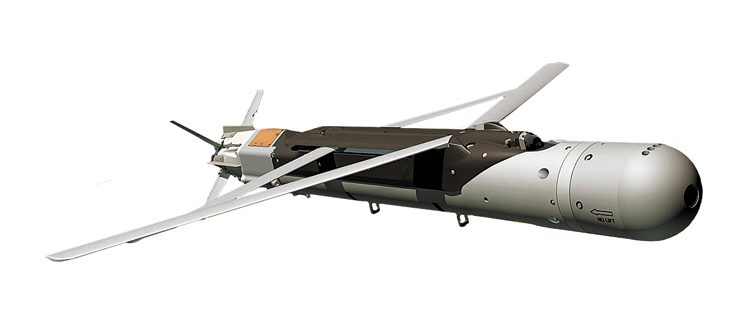
Affordability and Strategic Value
The cost-effectiveness of GLSDB is one of its most attractive features. For context, the Netherlands purchased 603 GBU-39/Bs in 2010 for $44 million—including support equipment. While the addition of an M26 booster raises costs slightly, GLSDB remains far cheaper than deploying fast jets for precision strikes.
Moreover, buyers receive more than just a missile—they must also invest in launch platforms, targeting systems, and GPS infrastructure. But even with these additions, GLSDB offers precision strike capabilities without the need for costly fifth-generation aircraft or stealth platforms.
Final Assessment: Evolution, Not Revolution
GLSDB may not be a game-changer on the level of nuclear weapons or radar, but it is a logical evolution in modern warfare. It reflects the broader shift from indiscriminate firepower to surgical precision, from heavy investment in manned aircraft to leveraging unmanned and ground-launched platforms.
For nations seeking to enhance their strike capabilities without breaking the bank—or escalating to high-profile, high-risk air campaigns—GLSDB is a practical and potent solution.
Key Specs at a Glance
- Range: 70–150 km
- Warhead: 90.3 kg (57.6 kg explosive)
- Launch Weight: 272 kg
- Platforms: M270 MLRS, M142 HIMARS, mobile launchers
- Guidance: GPS/INS with optional laser guidance
- Role: Precision strikes on fixed or concealed targets


